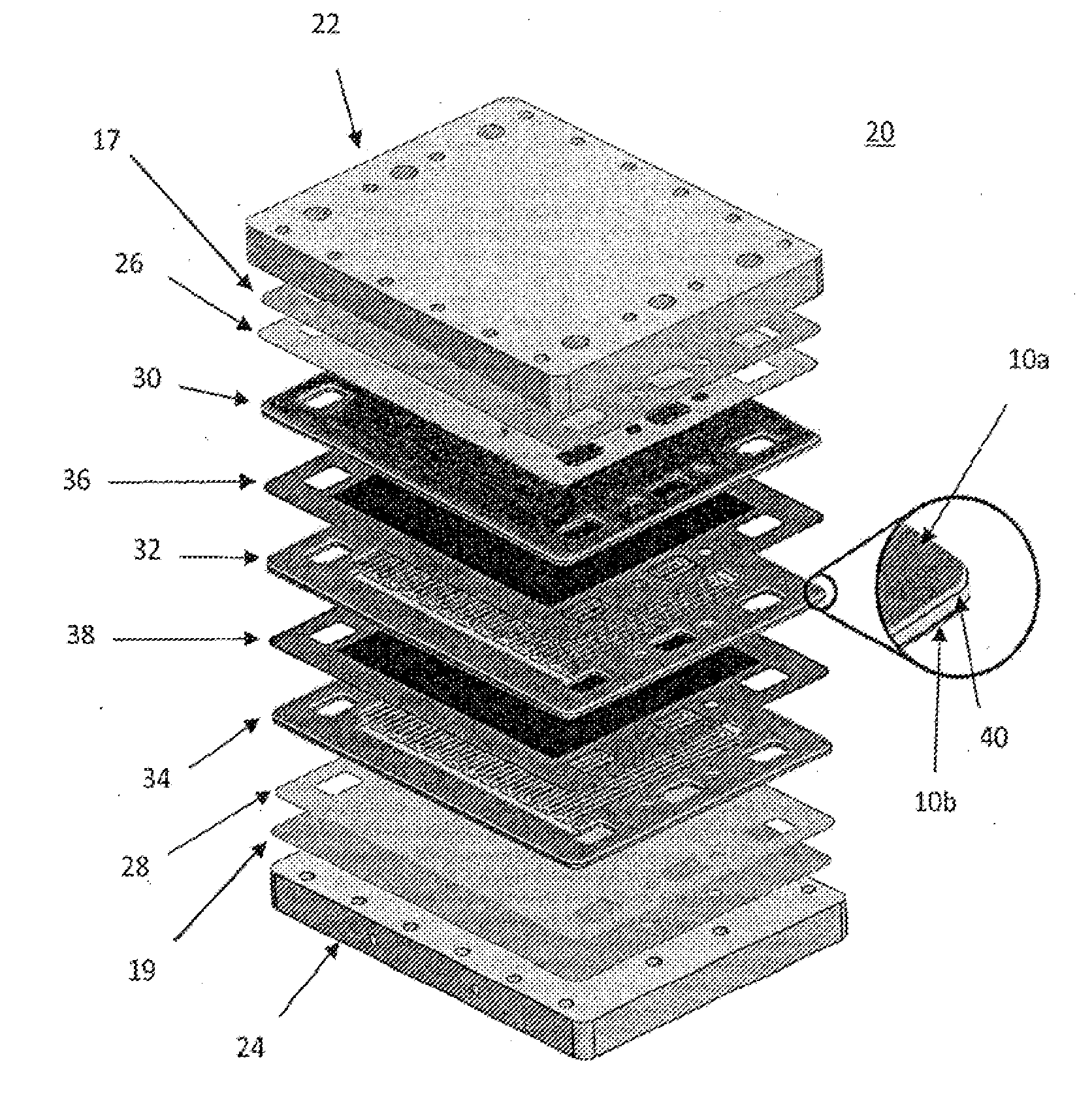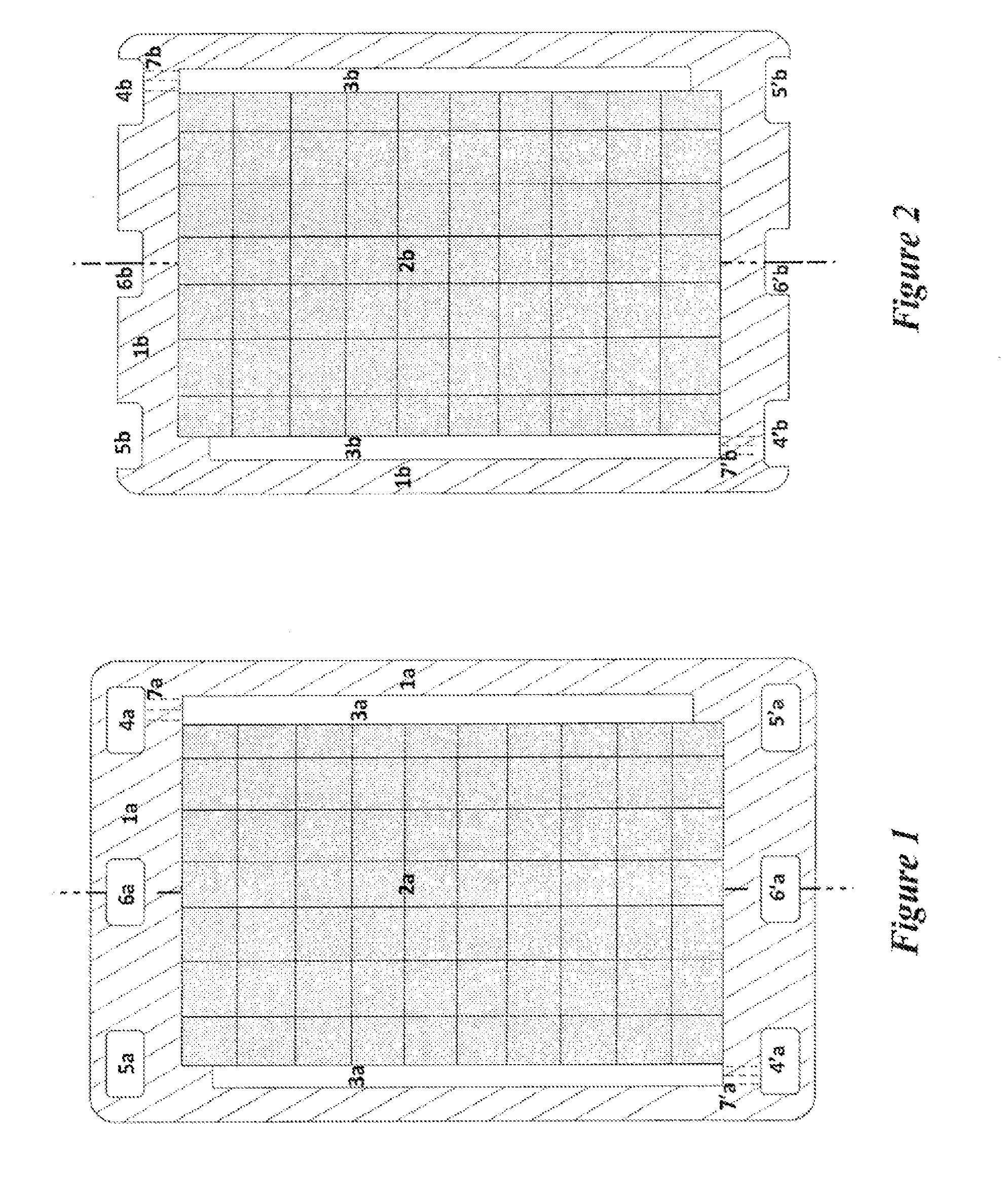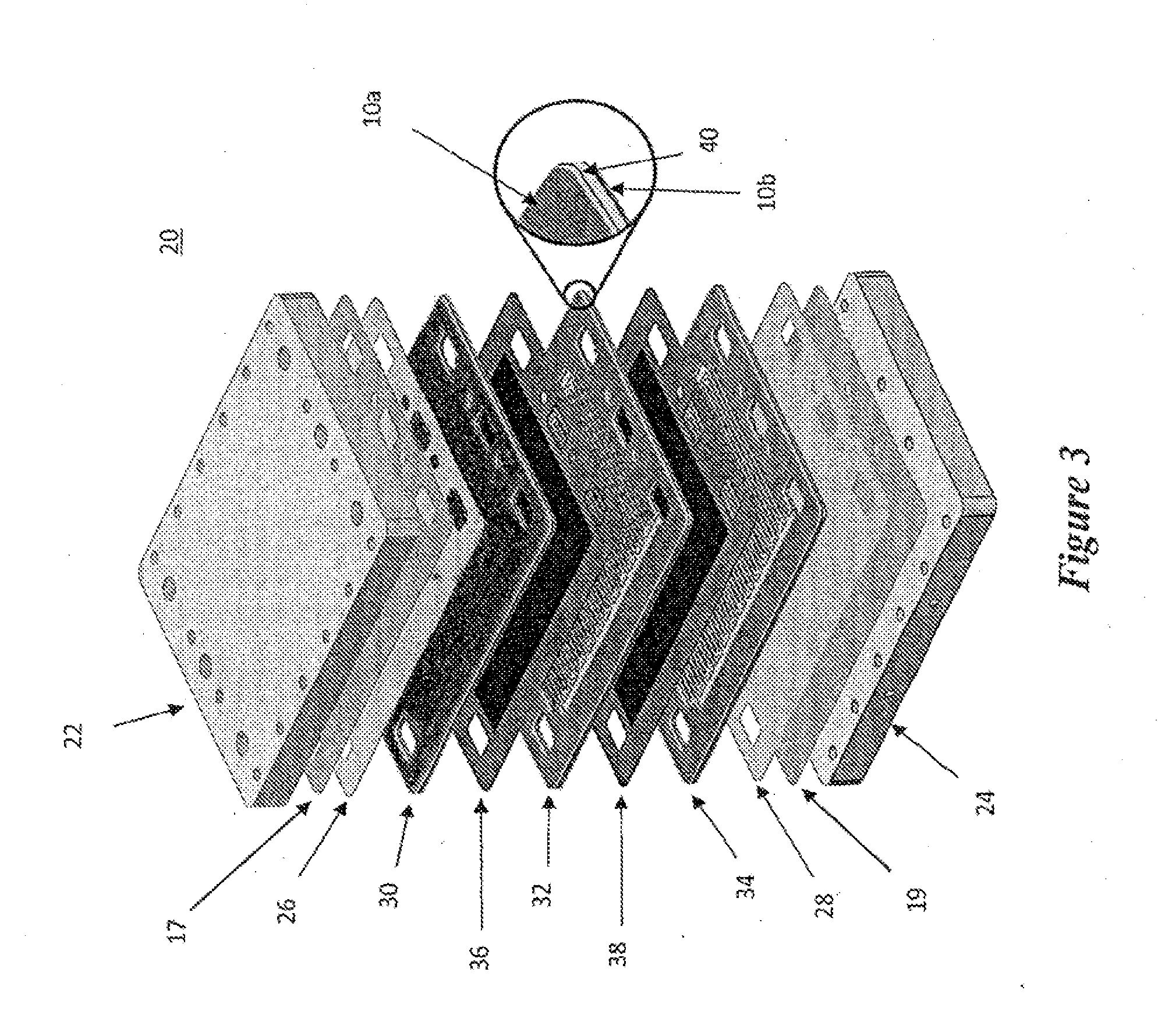Integrated Sealing For Fuel Cell Stack Manufacturing
a technology of fuel cell stack and manufacturing method, which is applied in the direction of sustainable manufacturing/processing, final product manufacturing, electrochemical generators, etc., can solve the problems of poor manufacturing yield, poor manufacturing yield, and inconvenient so as to facilitate the disassembly and reassembly of the stack without undue effort or expense. , the effect of efficient and cost-effective manufacturing methodology
- Summary
- Abstract
- Description
- Claims
- Application Information
AI Technical Summary
Benefits of technology
Problems solved by technology
Method used
Image
Examples
Embodiment Construction
[0025]An illustrative embodiment of the present invention relates to a seal, and corresponding method of manufacture enabled by the physical properties of the seal, for PEM fuel cell (and other electrochemical) stacks providing low-cost manufacturing and reliable / durable operation in high temperature (e.g., 120° C. to 250° C.) and acidic environments. The seal and corresponding manufacturing methodology of the present invention are particularly suitable for high temperature (e.g., 120° C. to 250° C.) PEM stack assemblies, but may be utilized in other applications. Conventional stack seals and methodologies prior to the present invention were developed for low temperature (e.g., 100° C. or less) PEM stack assembly fuel cell applications. The seal of the present invention provides an elastomeric material portion, and a protective portion that protects the elastomeric material from the high temperature acidic environment, such as found in high temperature PEM fuel cells. The seal of th...
PUM
| Property | Measurement | Unit |
|---|---|---|
| operating temperatures | aaaaa | aaaaa |
| operating temperatures | aaaaa | aaaaa |
| temperature | aaaaa | aaaaa |
Abstract
Description
Claims
Application Information
 Login to View More
Login to View More - R&D
- Intellectual Property
- Life Sciences
- Materials
- Tech Scout
- Unparalleled Data Quality
- Higher Quality Content
- 60% Fewer Hallucinations
Browse by: Latest US Patents, China's latest patents, Technical Efficacy Thesaurus, Application Domain, Technology Topic, Popular Technical Reports.
© 2025 PatSnap. All rights reserved.Legal|Privacy policy|Modern Slavery Act Transparency Statement|Sitemap|About US| Contact US: help@patsnap.com



